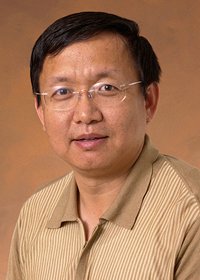


4800 Oak Grove Drive
M/S 198-235
Dr Yang Cheng is a Senior Member of Engineering Staff at the NASA-Jet Proportion Laboratory, California Institute of Technology, in Pasadena, CA , where he currently works on the machine vision algorithm development for space robotic exploration missions.
Dr. Cheng earned M.S from the Institute of Surveying and Mapping, Zhengzhou, China in 1989. Under supervision of three preeminent scholars, Prof. Wu, Zongxing, Prof. Yang Qihe and Prof. Li, Gouzhao, Dr. Cheng studied the conformal map projection for satellite remote sensing imaging.
Dr. Cheng earned his PhD from the University of South Carolina under supervision of Prof. John Jensen. Dr. Cheng's PhD thesis focused on the area of remote sensing data processing using parallel computers.
After graduation, Dr. Cheng spent about a year as a software engineer at SUMMUS Ltd. At SUMMUS he has developed the State of the Art image and video compression algorithms including fast and progressive image encoding and decoding scheme using Wavelet theory; low memory Wavelet transform scheme and video compression and decompression scheme using Wavelet theory.
In 1994, Dr. Cheng accepted research staff position at the Oak Ridge National Laboratory
(ORNL). Dr. Cheng works at ORNL cover the areas of remote sensing, geographic
Information system (GIS), parallel computation and map projections. Major achievements include
" airborne photo transportation network mage extraction system;
" autonomous image registration system using linear features;
" Airborne MSS imagery autonomous registration and mosaic system;
" Large-scale seamless image mosaic system using supercomputer;
" Conformal space projection for satellite imagery display;
" Irregularly shaped object map projection funded by JPL
In 1999, Dr. Cheng became a senior staff member of Machine vision group at JPL, where he develops vision-based techniques for spacecraft navigation, safe and precise landing and surface rover navigation. In the last few years, his research has focused on autonomous landmark based spacecraft navigation, passive image based hazard detection, spacecraft pinpoint landing, and rover navigation technology. At JPL, he pioneered the development of landmark detection and tracking algorithms, which enabled to reduce the optical orbit determination from a few weeks of manual operation to a few hours of autonomous operation. He is a major developer of the Descent Image Motion Estimation System (DIMES) for Mars Exploration Rovers (MER) safe landing. He has also implemented visual odometry, which is used by two MER rovers at daily basis. His researches are sponsored by NASA MTP, NASA CICT/IS, JPL IND, JPL TMOD programs.
Ph.D. University of South Carolina, Columbia, SC, 1993.
M. E, Institute of Surveying and Mapping, Zhengzhou, China, July 1989.